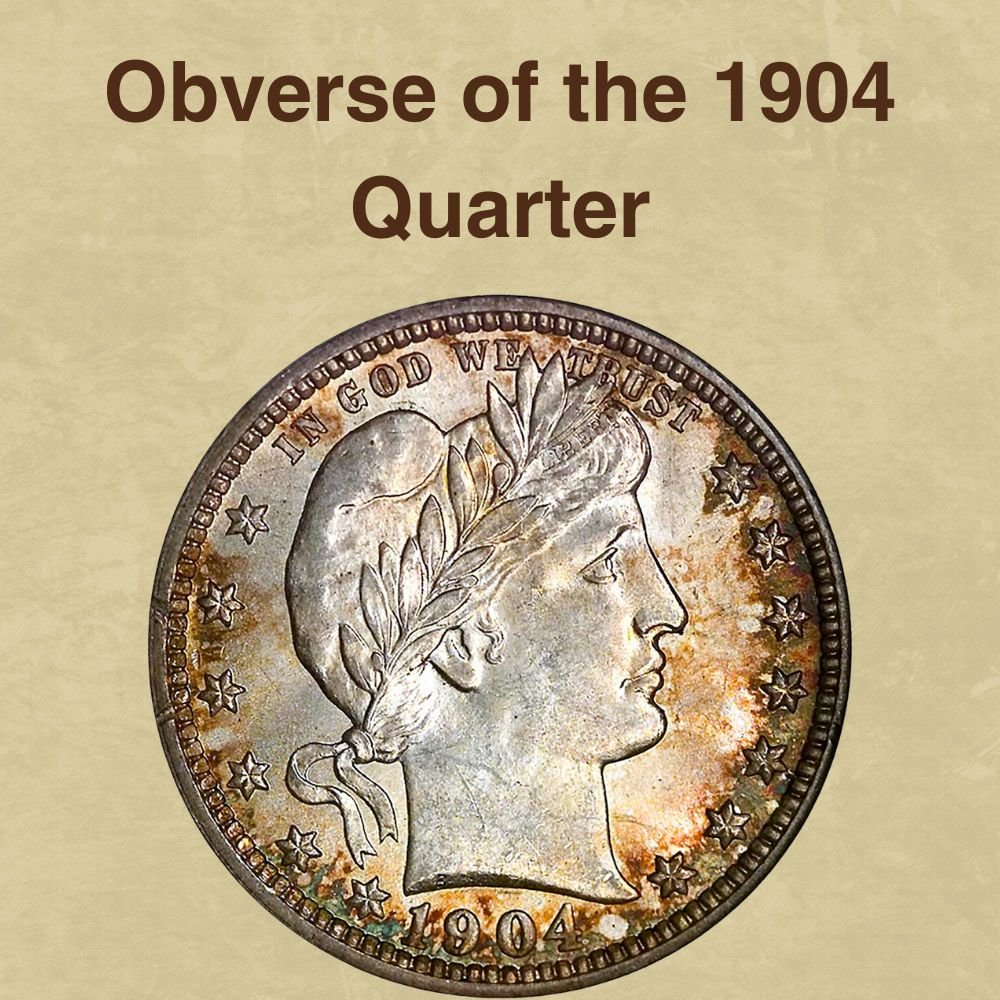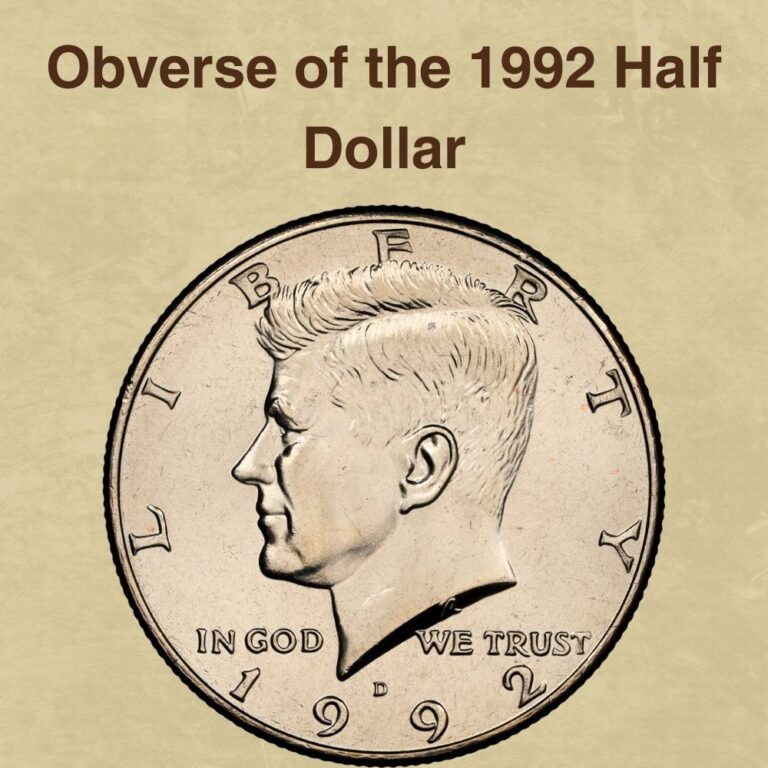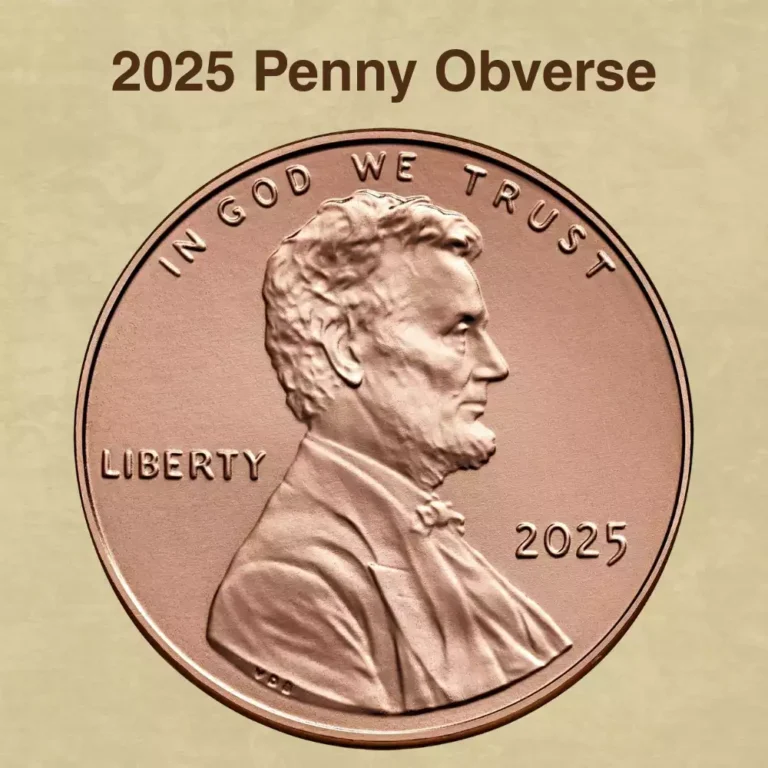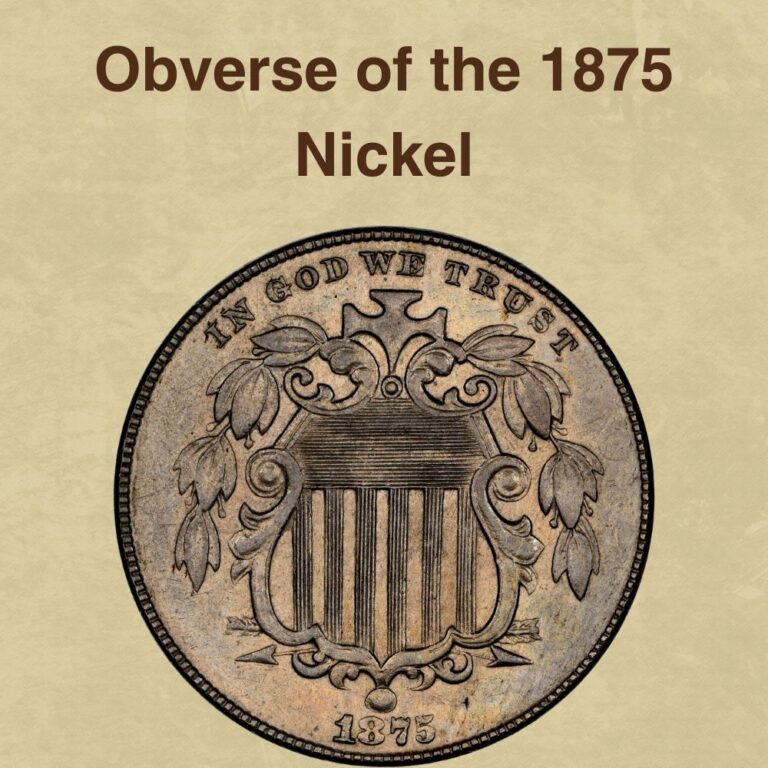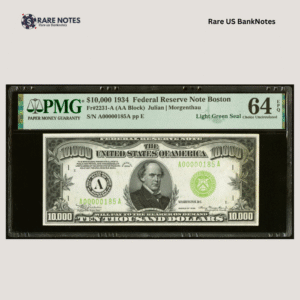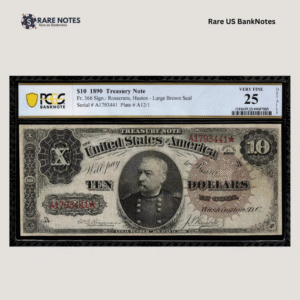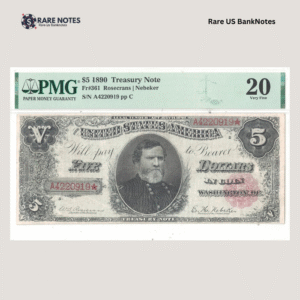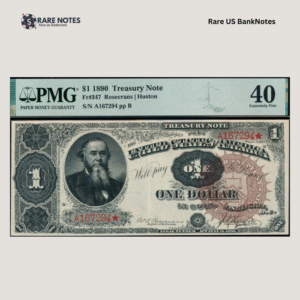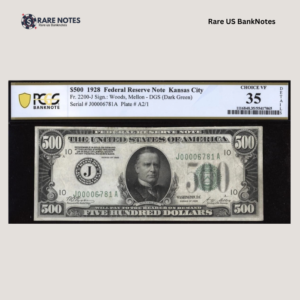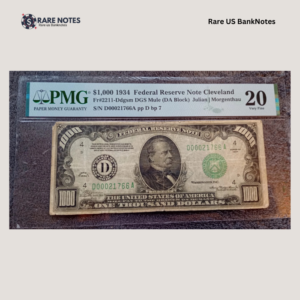Are you keen on building a complete Barber quarters set? Or have you just come across a 1904 quarter and are curious whether it’s worth any money? Our 1904 quarter value guide will answer all your questions about this coin. We’ll reveal the real market value of the 1904 Barber quarter and show you how to authenticate and grade this classic coin. You’ll also discover high-value minting errors that can be a worthwhile addition to your collection.
Let’s get started and find out: How much is a 1904 quarter worth?
1904 Quarter Value Chart |
||||
| Mint Mark | Good | Fine | Extremely Fine | Uncirculated |
| 1904-No Mint Mark Quarter Value | $15 | $30 | $100 | $9,000 |
| 1904-O Quarter Value | $35 | $140 | $300 | $27,500 |
| 1904- Proof Quarter Value | – | – | – | $35,250 |
History of the 1904 Quarter
The 1904 quarter is part of the long-running Barber coinage series, which the United States Mint produced from 1892 to 1916. The 1904 quarter was only struck at the Philadelphia and New Orleans Mint, and none at the San Francisco Mint, like other dates in the series.
The Barber design replaced the Seated Liberty design, which was displayed on silver coinage for most of the 19th century. The Seated Liberty design, however, faced mounting criticism over the years and was seen as having too much English influence. In September 1890, President Benjamin Harrison signed a law authorizing the Mint to redesign all U.S. coinage after obtaining approval from the Secretary of the Treasury. The legislation also allowed the Mint to change the design 25 years after the coin was first produced.
Then-Mint Chief Engraver Charles E. Barber proposed that the Mint hold a competition inviting artists to submit designs for the new coinage. But, it was only after a new director, Edward O. Leech, was appointed that the Mint implemented the idea to launch a competition for artists. But, this time, only the winner would be awarded $500 while other participants would receive no reward. The elite artists declined the invitation, and so Leech asked Barber to create the new coin designs. The two men disagreed a lot about the design, with Leech requiring multiple revisions. Eventually, Barber presented a design that Leech found acceptable, and they offered it to President Harrison for approval in November 1891, paving the way for production the following year.
The 1904 issue of the Barber quarter is not among the key dates, but it can still be a valuable addition to your collection. Examples in Mint State are a bit hard to find and can be worth a significant premium. In addition, several high-value minting errors worth collecting can be found in this date. We’ll learn more about these in a bit.
Also read: Top 13 Most Valuable State Quarters Worth Money
Features of the 1904 Quarter
Now, let’s look at the standout features of the 1904 quarter, which can help you authenticate and grade your silver coins more accurately. By knowing these features, you can also spot Barber quarters worth money.
Here’s what to look out for:
Obverse of the 1904 Quarter
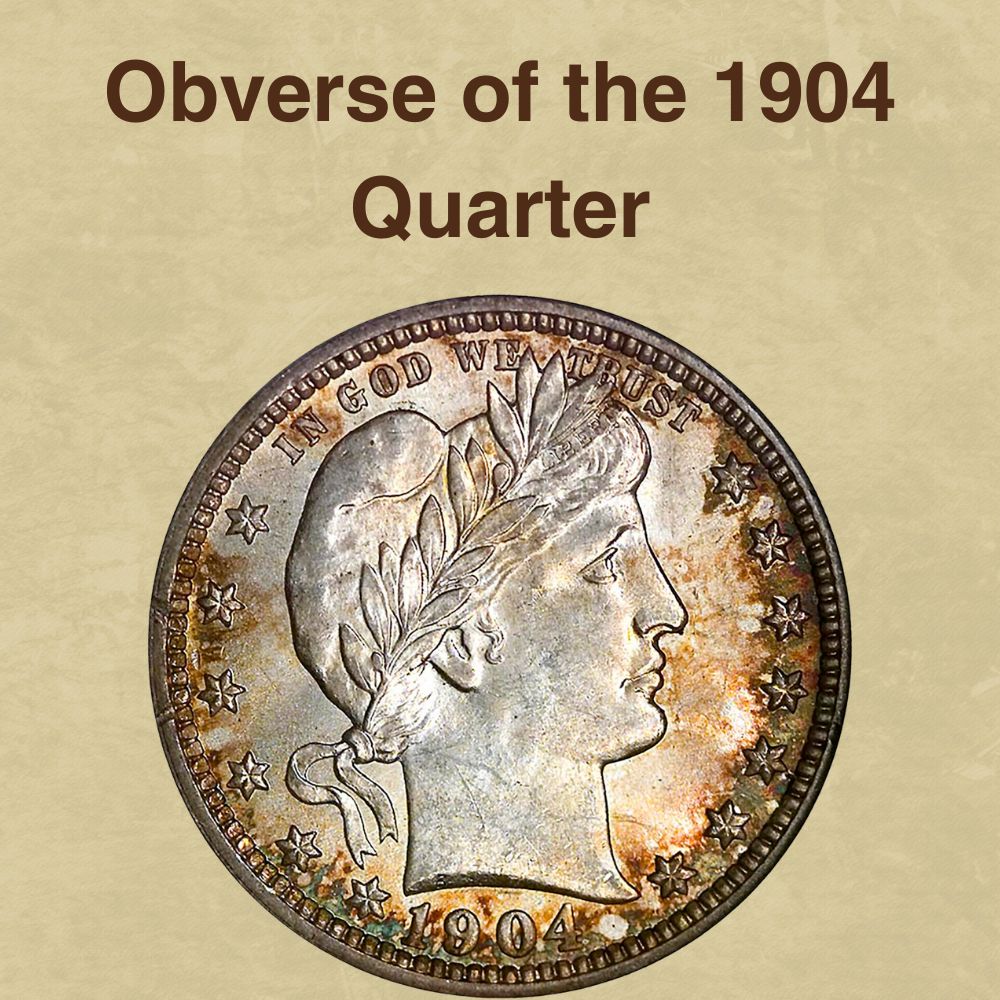
The “heads” features Liberty’s right-facing profile in which she adorns a Phrygian cap. A laurel is tied around her head with the inscription LIBERTY on the forehead area.
The motto IN GOD WE TRUST is etched at the top along the rim, while the date is shown at the bottom, also along the rim.
Thirteen stars, six to the left and seven to the right, flank Liberty’s portrait. In total, the thirteen stars represent the states that first joined the Union after Independence.
Numerous, tiny denticles decorate the rim all around.
Reverse of the 1904 Quarter
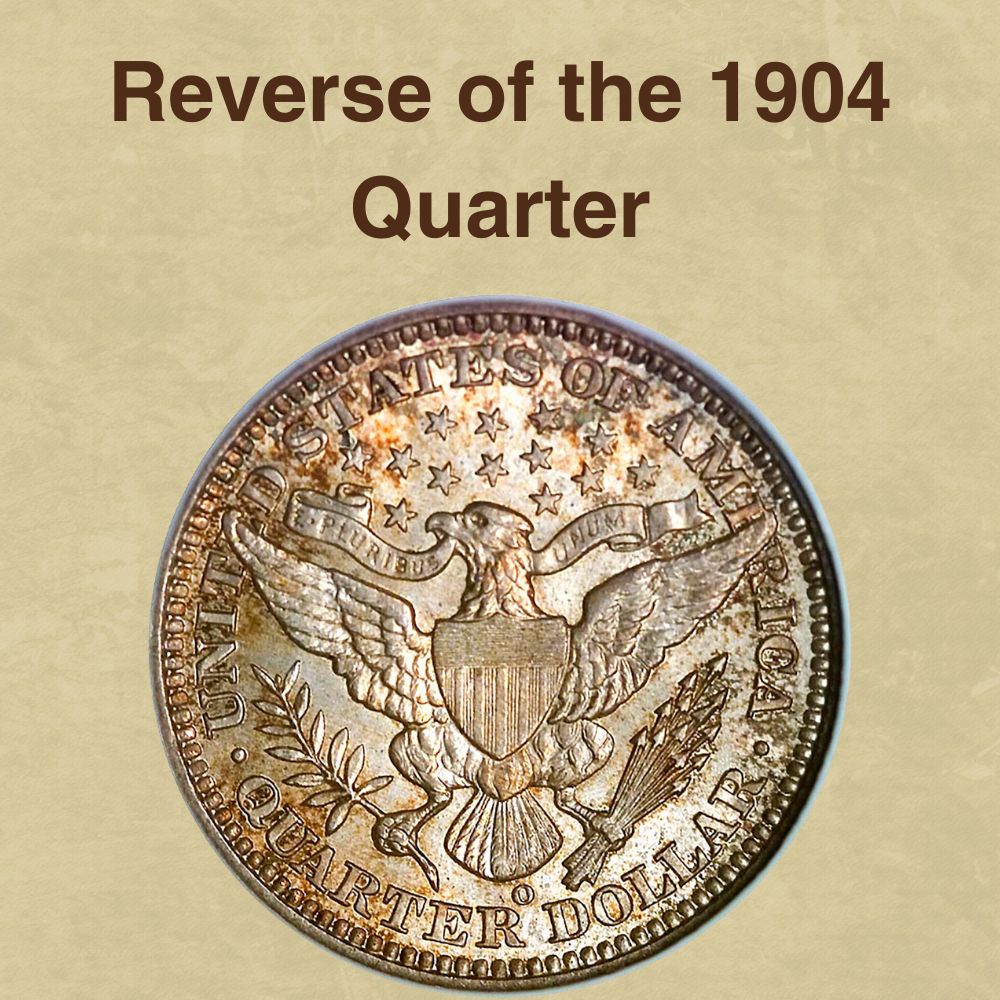
The “tails” shows the image of a heraldic eagle with a shield on its breast. The shield is symbolic of strength in the unity between the state governments under the oversight of the federal government.
In its beak, the eagle clutches a flag inscribed with the Latin inscription E PLURIBUS UNUM, meaning “Out of One, Many.” A constellation of thirteen stars appears above the eagle’s head—these, too, represent the thirteen states that first joined the Union.
In its left talon, the eagle holds arrows, which symbolize victory but also are a sign of self-defense against aggression. The olive branch in the right talon represents peace.
The inscriptions, UNITED STATES OF AMERICA, are shown in an arc at the top along the rim, while the denomination, QUARTER DOLLAR, is inscribed at the bottom along the rim too.
Similar to the obverse, small denticles decorate the rim on the reverse.
Other Features of the 1904 Quarter
Additional features worth noting are:
- Diameter: 24.30 millimeters
- Weight: 30 grams
- Edge: Reeded
- Metal Composition: 90% Silver, 10% Copper
- Fineness: 0.9
- ASW: 0.1808oz
Also read: Top 16 Most Valuable Modern Quarters Worth Money
1904 Quarter Value Guides
The market value of a 1904 Barber quarter depends on the coin’s condition, mintage, and rarity. Minting errors can also add to the value of your coin.
There are three types of the 1904 quarter:
- 1904 (P) Quarter
- 1904-O Quarter
- 1904-Proof Quarter
Let’s find out how much each is worth.
1904 (P) No Mint Quarter Value
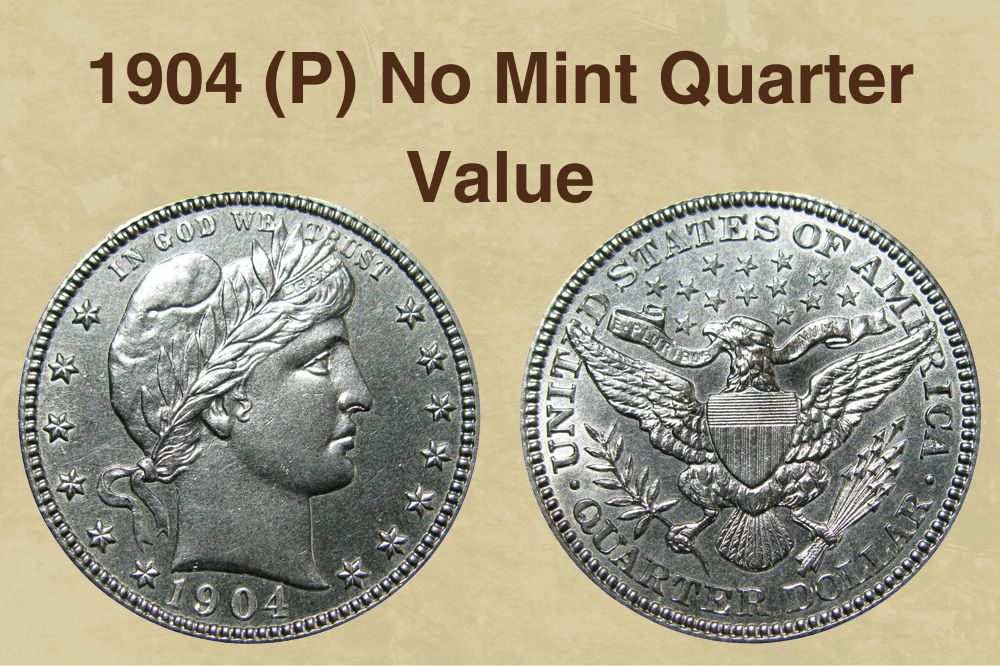
The Philadelphia Mint struck about 9,588,143 quarters in 1904. As was the tradition then, coins struck in Philadelphia at the time did not have a mintmark. This issue had one of the highest mintages in the series and is relatively common in all grades.
Here’s a breakdown of the value of the 1904 (P) quarter:
- Circulated Examples: These are common up to About Uncirculated (AU). The lower grade survivors are also affordable and easily accessible to most collectors. Examples graded Poor/Average are worth about $10, while those in Good (G) condition can sell for up to $15. Fine (F) examples are worth as much as $30, and Extremely Fine (F) ones sell for about $100. About Uncirculated (AU) examples are scarcer, with prices shooting up to at least $270 for AU58 survivors.
- Mint State Examples: Uncirculated examples are surprisingly plentiful and are enough to meet the demand from advanced collectors. Few Gems have also been certified and are accessible to the advanced collector. In MS60, examples are worth about $315 and up to $345 in MS61. Survivors graded MS63 are relatively affordable, selling for up to $550 and up to $900 in MS64. Gems in MS65 are relatively scarce, with prices shooting up to $1,800 and further up to $9,000 for survivors graded MS67.
- Auction Record: In a 2020 sale, Stack’s Bowers auctioned an MS67 for a remarkable $26,400, making this one of the most valuable examples of a 1904 Barber quarter.
1904-O Quarter Value

Next is the 1904-O quarter struck at the New Orleans Mint. Despite a mintage of 2,456,000, these quarters are scarce across all grades. This could be attributed to the technical problems that resulted in poorly struck coins. Mint State survivors are relatively available but become increasingly scarce in higher grades.
So, how much can you expect from a 1904-O quarter? Here’s a breakdown of the market value:
- Circulated Examples: These are surprisingly scarce even in lower grades and become relatively difficult to find in Extremely Fine (XF) and higher. Examples in Poor/Average condition are worth about $20, whereas those in Good (G) condition have a market value of about $25. In Fine (F) condition, examples are worth as much as $140, while Extremely Fine (XF) survivors can fetch about $300. About Uncirculated (AU) examples are genuinely scarce and can command as much as $1,050 in AU58.
- Mint State Examples: Uncirculated survivors are scarce in lower grades and rare in higher grades, which is reflected in their higher prices. For example, in MS60 quarters can fetch as much as $1,125 and up to $1,200 in MS61. Survivors graded MS64 and higher are genuinely rare and command higher premiums. In MS63, examples sell for up to $1,700, but prices shoot up to $2,750 in MS64 and as much as $4,500 in MS65. Rare Gems graded MS66 can command up to $7,000 and at least $27,500 in MS67.
- Auction Record: In 2022, Legend Rare Coin Auctions sold an extremely rare MS67+ for a record-shattering $42,500. This is one of the most valuable examples of 1904-O quarters.
1904- Proof Quarter Value

In addition to the circulation strike quarters, the Philadelphia Mint struck proof Barber quarters. The 1904 proof quarter mintage amounts to an estimated 670. These coins are generally well struck with frosted surfaces and satiny devices. Proof sales had been on a decline since 1900, and this continued in 1904, so examples are enough to meet the demand for advanced collectors.
Here’s a breakdown of the market value of 1904 Proof quarters:
- Regular Proofs: Ordinary proof coins are plentiful, especially in lower grades, but become scarce in the higher grades, with a corresponding price increase. In PF60, specimens can sell for as much as $415, while MS63 examples can fetch up to $880. In PF65, gem quarters are worth about $2,350 while rare PF68 specimens will command about $12,250 and as much as $35,250 in PR69. In a 2012 auction, Heritage Auctions sold an extremely rare PF69 for a whopping $41,500.
- Cameos: Cameos are scarce in all grades and only a few certified examples are known to date. Most survivors are graded PF64-PF66 with prices ranging from $1,575 to $4,500. The highest known grade is a PF68, which can sell for as much as $14,000. In a record-shattering sale, Heritage Auctions sold a PF68 for $15,000.
- Ultra-cameo: There are no known ultra-cameo examples of the 1904 proof quarter.
1904 Quarter Grading
When grading a 1904 Barber quarter, examine the coin for wear and surface quality. Focus on the areas that wear out the fastest, including Liberty’s hair on the forehead and ear, the laurel wreath, and LIBERTY on the laurel band. On the reverse, examine the eagle’s head, wings, tail feathers, shield, talons, olive branch, and arrows.
In lower grades, details are almost all flat with no outline, but become more visible and defined in middle grade coins in Fine (F) to Extremely Fine (XF) condition. About Uncirculated (AU) coins display full details with traces of wear, while Mint State (MS60+) quarters show no signs of wear, display crisp detail, and have full luster.
Check out this video for more tips on grading Barber Quarters.
Rare 1904 Quarter Errors List
Several minting errors show up in the 1904 Barber quarter issue. Here are some that are worth a spot in your collection.
1. 1904 Quarter Re-Punched Date Error
On some 1904 quarters, the digits 04 appear doubled at the bottom due to a re-punched date error. This error occurs when the date is punched into the working die severally at slightly different angles. When the die strikes the planchet, the date then appears as having a ghost outline or a visible doubling. A re-punched date error is worth $20-$50, depending on the coin’s condition.
2. 1904 Quarter Misplaced Date Error
Another error commonly seen on 1904-O quarters is the misplaced date, in which the 4 is punched slightly lower than the rest of the digits. You might notice faint traces of the bottom part of the 4 almost touching the denticles. A misplaced date error occurs when one or more numbers of the date are punched into the wrong position on the die. This error can add $20-$100, depending on its visibility or intensity.
Also read: 17 Most Valuable Quarter Errors Worth Money
Where to Sell Your 1904 Quarter?
Now that you know the value of your coins, do you know where to sell those coins online easily? Don’t worry, I’ve compiled a list of these sites, including their introduction, pros, and cons.
Check out now: Best Places To Sell Coins Online (Pros & Cons)
FAQs
How much is a 1904 quarter worth today?
The market value of a 1904 quarter ranges between $10 and $27,500, depending on whether the coin is circulated or uncirculated and in Mint State. Uncirculated quarters with little to no wear can command significant premiums.
How do I tell if a 1904 quarter is valuable?
You can identify a valuable 1904 quarter by examining the wear and strike quality. Coins with little to no wear, eye-catching surfaces, and showing only minimal damage are uncirculated and are worth high premiums. Quarters with unique minting errors are also considered rare and valuable.
How to identify a fake 1904 quarter
If you happen to come across a 1904 quarter, you can authenticate it by comparing the coin with images of certified quarters from trusted bodies such as the Professional Coin Grading Service (PCGS) and the Numismatic Guaranty Company (NGC). Compare key features including the diameter, weight, and edge. You can also use a magnet— real silver should not stick to the magnet.
The post 1904 Quarter Coin Value (Errors List, “O” & No Mint Mark Worth) appeared first on CoinValueChecker.com.


